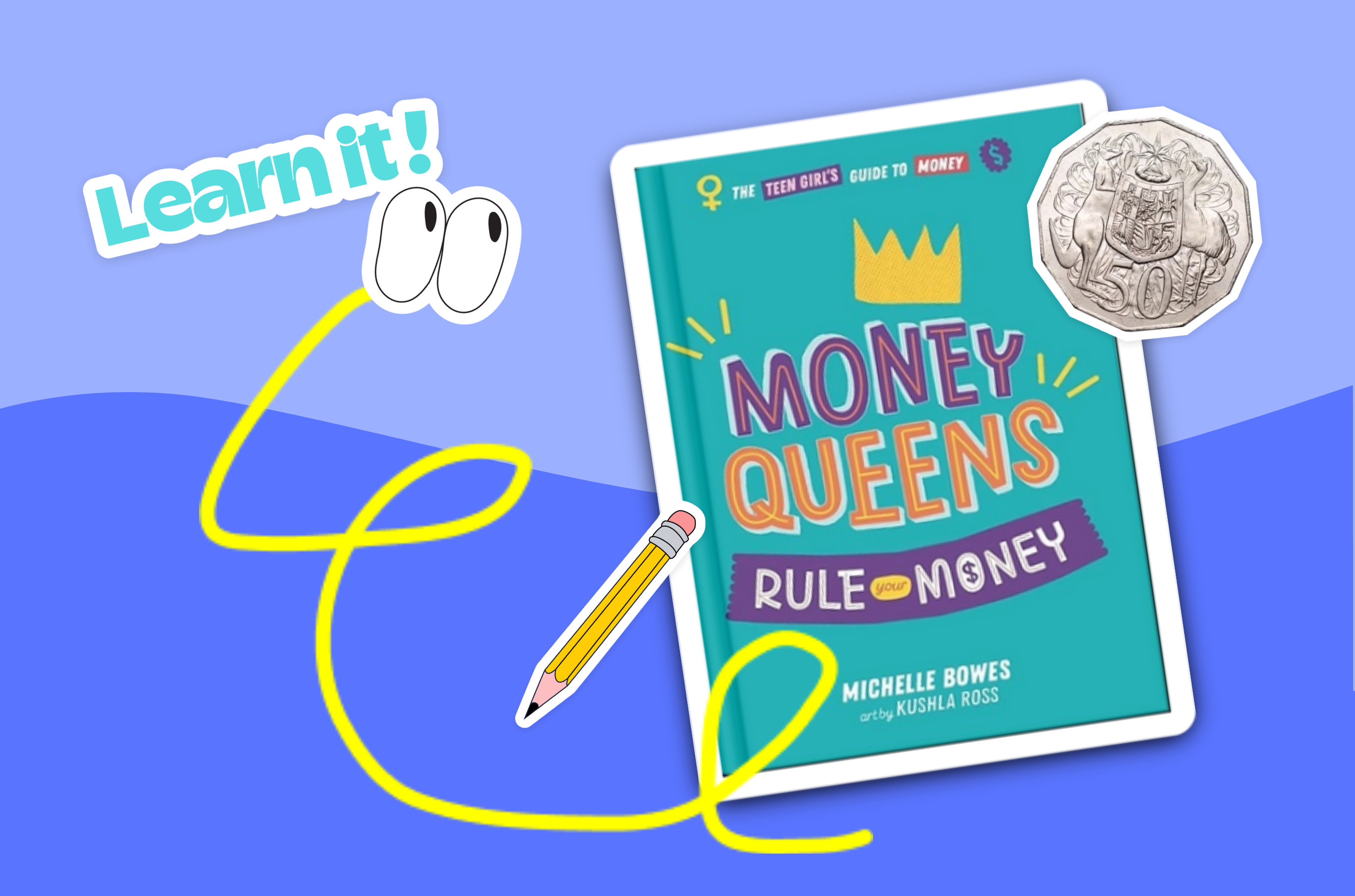1. Pocket money – unpaid jobs for helping out, paid jobs for $$
“I’ve always asked my kids to do jobs for pocket money, it’s really important to establish the link between work and earning money early in life.” Michelle pays $1 per year of age, with her kids receiving a pay rise on their birthday.
When it comes to chores or jobs, Michelle has two types:
- Regular, unpaid jobs that focus on helping the family out, like emptying the dishwasher.
- Pocket money jobs done for cash. These tend to be focused on building independence and life experience and are things that directly benefit her kids – like making their lunch for school or doing their own washing. But jobs need to be done well – or Michelle may only pay a portion of the pocket money.
Michelle finds that paying kids for jobs also empowers them – “when they ask for something, instead of saying no, you explain, ‘If you did your jobs, you can buy these things’. “
2. Get a part-time job
For Michelle, working part-time is non-negotiable. Her kids have jobs that leverage their own interests – one daughter plays netball, so works as a netball umpire, while the other is a dancer and has a job at her dance school teaching younger students.
Michelle believes that jobs not only teach kids about money, but about life - how to deal with all sorts of people and issues, and how to work well with others.
“The best way to learn about money is to have money and make decisions about it, otherwise it’s just theoretical. The best learning is done on the job.”
With the money they’ve earned, Michelle prompts conversations around how each of her children want to save, or even invest their money for the future. One daughter saves money in a high interest savings account, while the other has chosen to invest, so Michelle uses an investing app to buy shares for her.
3. Integrate money into everyday life and make it fun.
Michelle’s approach is to talk about money openly from a young age, and get the kids involved in everyday, fun money experiences. Some of her tips include:
- Don’t hide the costs of things, and don’t be afraid to answer “why can’t we have…” questions by talking about family priorities and budgets.
- Involve kids in holiday planning – give them a budget per night and get them to research hotels. It gives insight into what it costs, and what kind of hotels you can get for your budget.
- Shopping list – If the kids want to make something for dinner, ask them to look up the ingredients to buy, and research the cost online. This helps them understand why we make meals at home, and not have takeaway all the time. It also helps them understand the feeling that the chef gets if no one likes their meal!
4. Help kids to save
For Michelle, there is power in sharing goals. She gets her kids to choose a savings goal and date, and then helps them stay accountable. But she also recognises it’s OK to make mistakes or have a goal and not meet it by the deadline. Failure is a learning moment, and an opportunity to help them understand their emotions (like guilt from spending). She told this story:
“One daughter recognised that she isn’t great at saving and knew that she was tempted to spend. She decided to give her debit card to me, so that every time she wanted to buy something she would need to ask me, and I would ask her “Why do you want it? What about your savings goal? Do you want to have another think about it?”.
Michelle recommends younger kids receive their pocket money in cash to help them understand the concept of money. However, as cash doesn’t pay interest, she believes that at the appropriate age, financial products, including bank accounts, have an important role to play to teach kids about how interest works, and what things to look for in a bank account.
5. Raising financial feminists
As the author of a book that seeks to financially empower teenage girls, Michelle describes her approach as “raising financial feminists” – which also extends to her son. With all 3 of her children, Michelle talks about:
- The fact that both genders should have a level playing field.
- The gender pay gap, the retirement gap and why they exist.
- Talking about what financial abuse is.
- How these things might impact their future and the life choices they make.
You don’t need to be an expert to put Michelle’s advice into practice. To find out more, Michelle’s book, Money Queens, breaks down all the key money concepts in an easy to understand and practical way– for teens and adults alike.

A business and personal finance journalist with over 20 years' experience, Michelle is the author of Money Queens: rule your money - a feminist financial guidebook for teenage girls. She's also mum to two teenage girls and a tween son. Michelle believes that when it comes to money, knowledge is power and she's passionate about giving kids the tools they need to rule their financial futures. Learn more at www.moneyqueens.com.au or @money.queens.au on Instagram.
Kit is exploring opportunities with CommBank Youthsaver to integrate more closely in the future.
Read the T&Cs, FSG, PDS and TMD at heykit.com.au/legal and consider if Kit is right for you. Issued by Hay Limited. Fees and charges may apply. Any advice given is general in nature.


